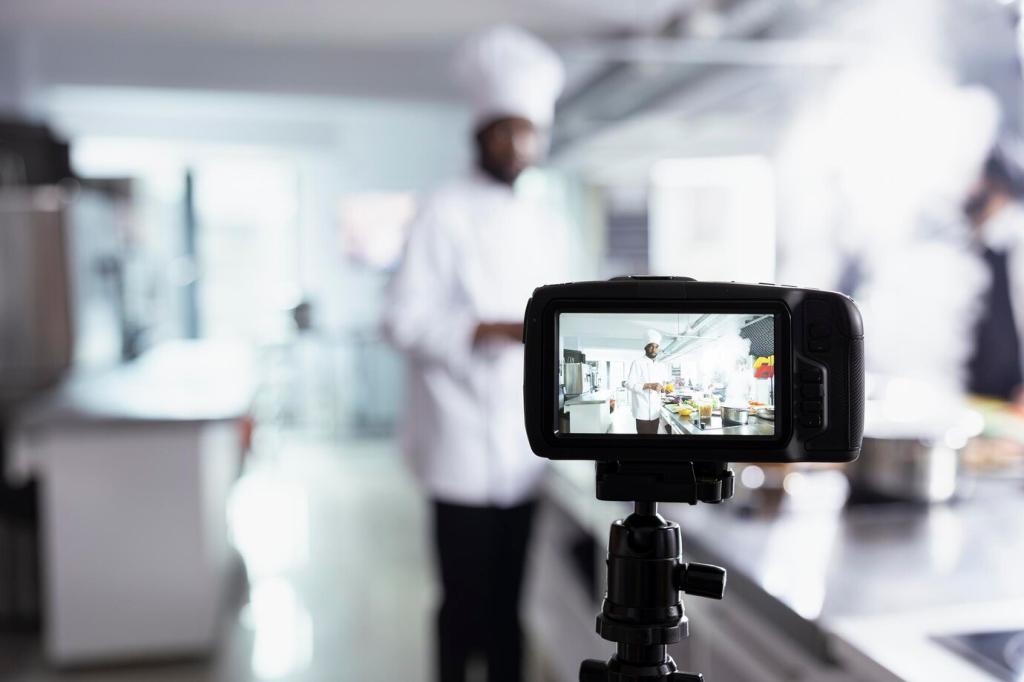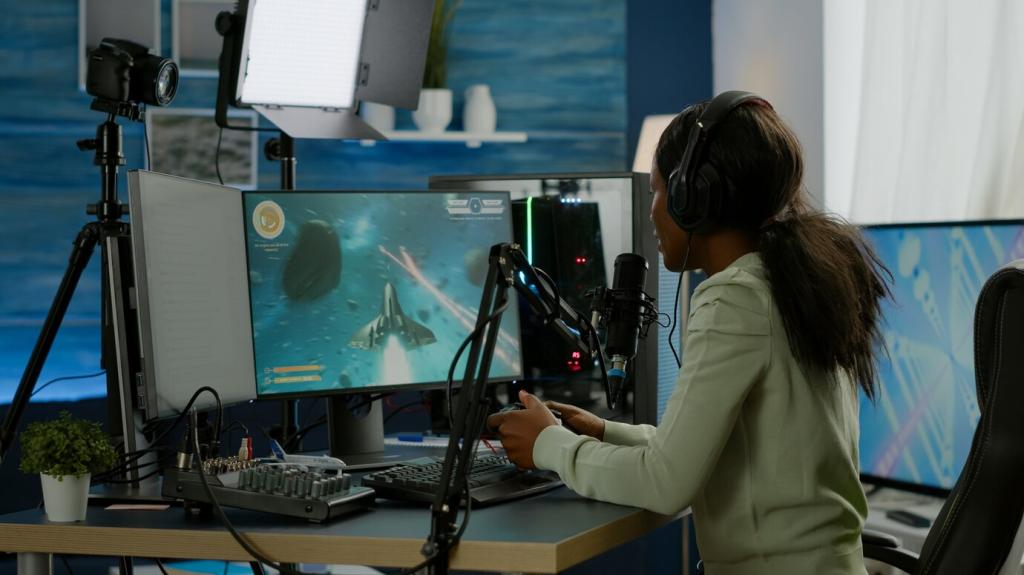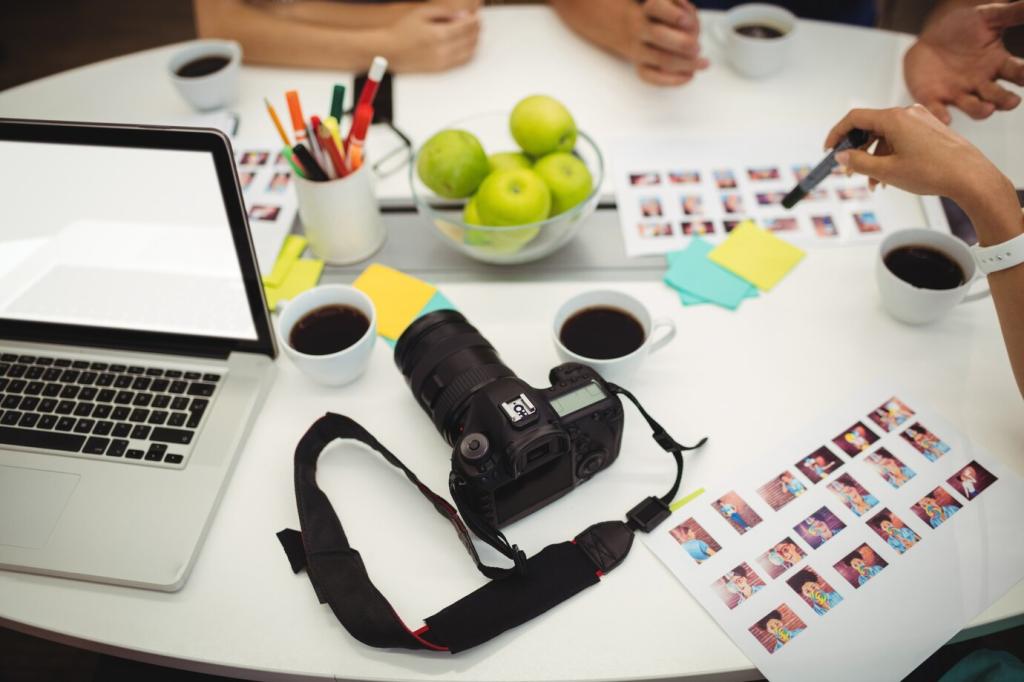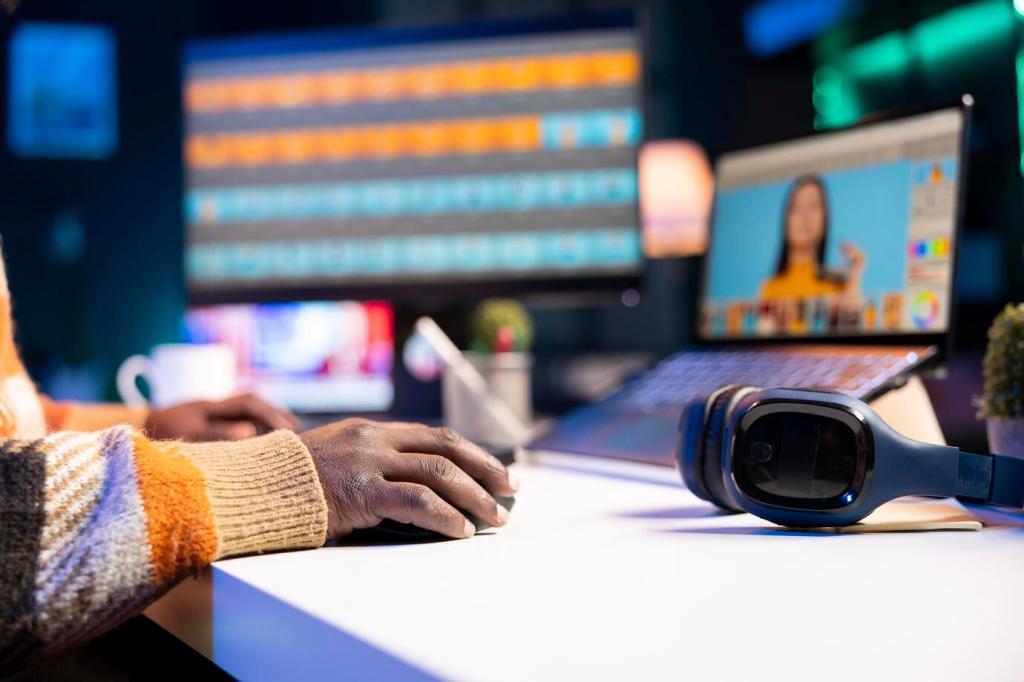Step Inside the Story: Virtual Reality in Media Consumption
Chosen theme: Virtual Reality in Media Consumption. Welcome to a world where you don’t just watch—you inhabit the narrative. Today we explore how immersive tech reshapes viewing habits, storytelling, and community. Share your VR milestones in the comments and subscribe for weekly deep dives into living, breathing media.

In VR, the metric is no longer minutes watched but minutes felt. Presence collapses the space between you and the story, turning observation into participation. Comment with a moment when you instinctively ducked, reached, or whispered, forgetting it was all pixels and not a physical set.
From Screens to Scenes: Changing Habits in Immersive Viewing
Storytelling Reimagined for Virtual Spaces
Without a rectangular frame, creators choreograph light, sound, and motion to guide you. A flicker behind you, a door creak, a character waving—these become invisible arrows. Tell us which subtle cue pulled your eyes across a scene and why it felt more respectful than a hard cut.
Your position in space becomes a verb. Crouching reveals hidden notes, stepping closer changes a confession’s tone, looking away can deny a character validation. Share a moment when your simple choice changed a story beat, and whether it felt empowering, unsettling, or both at once.
Spatial audio in VR does more than add flavor—it guides, warns, and comforts. A whisper behind your left ear invites curiosity; thunder rolling overhead anchors your body. Recommend a piece with standout spatial sound design and tell us how it shaped your emotional path through the scene.
Designing Comfort for Long VR Sessions
Teleportation, arm-swinging, and room-scale movement all trade immersion for stability. Smooth locomotion can be glorious but demanding. We suggest starting with generous vignetting and slow acceleration curves. What movement style lets you enjoy longer stories comfortably? Share tips for motion-sensitive friends.
Designing Comfort for Long VR Sessions
Text floats, panels curve, and your neck is the scroll wheel. Good VR media keeps typography large, high-contrast, and anchored where your gaze naturally rests. Have you encountered a perfect virtual subtitle system? Drop recommendations that respect comfort without sacrificing narrative nuance.


Social Viewing in Virtual Theaters
01
Virtual Living Rooms with Real Laughs
Watch-parties in VR mimic couch culture: snacks become emotes, shushing happens via hand gestures, and shared eye contact lands a joke. The best moments come when avatars lean forward together. Invite a friend to a free short tonight and report your favorite spontaneous audience reaction.
02
Moderation and Safety Tools
Great social spaces include mute zones, personal boundaries, and quick reporting. Healthy communities make it easy to enjoy premieres without discomfort. Which platforms get this right for you? Share your experiences so newcomers know where respectful, vibrant conversations thrive.
03
Cross-Platform Interoperability Dreams
Friends scattered across devices still want to meet in one theater. Cross-play, identity portability, and universal invites remain a work in progress. Tell us the one interoperability feature that would most improve your weekly viewing ritual, and we’ll spotlight creator responses in future posts.

Headsets can infer attention, mood, and intent through gaze and motion. That sensitivity demands strict consent, transparency, and offline modes. Before you press play, check what’s collected and why. Advocate for privacy-first defaults—then tell us which platforms clearly earn your trust and how.

Guardians now consider play areas, session timers, and content ratings that capture intensity, not only themes. A gentle short in 2D may feel overwhelming in VR. Share family rules that keep immersion joyful, and suggest age-appropriate experiences that balance wonder with comfort.

Schedule breaks, hydrate, and practice mindful transitions when exiting emotional pieces. Keep a grounding ritual—step outside, journal, or call a friend. What habit helps you re-enter the physical world feeling present and calm? Your tip could support someone’s first meaningful VR documentary.
From Tickets to Teleportation Passes
Limited runs, time-slotted premieres, and interactive encore showings feel natural in VR. Access can include backstage worlds, director Q&A lounges, or artifact galleries. Would you pay for a behind-the-scenes immersion after a moving short? Tell us what add-ons feel meaningful, not gimmicky.
Brands as World-Builders
When done well, sponsorship becomes part of the set dressing rather than an interruption. A vintage radio brand powering a historical scene can feel authentic. Share examples where partnerships enhanced immersion and where they pulled you out, helping creators learn what truly respects the story.
Supporting Independent Creators
Tip jars, season passes, and community-backed premieres keep experimental voices alive. Small teams can build unforgettable rooms that mainstream studios overlook. Recommend an indie piece that deserves more love, and we’ll compile a community playlist to help new viewers discover hidden gems.
Hardware and Fidelity: The Tech Behind the Magic
Optics and the Quest for Clarity
Pancake lenses, higher refresh rates, and foveated rendering sharpen details while keeping performance smooth. Suddenly, text on a prop becomes readable exposition. Which headset first made you notice tiny background clues? Share that moment when clarity turned decoration into story.
Controllers, Hands, and Natural Input
Hand tracking lets you point, grab, and gesture as yourself. Subtle haptics in controllers add texture to pages, doors, and footsteps. Tell us when a simple squeeze or pinch sold the reality of a scene, and what input method you now prefer for long viewings.
Haptics and Spatial Audio as Emotional Glue
A heartbeat pulse during a tense monologue or a floor rumble under thunder binds your body to the narrative. Spatial audio paints the air with memory. Recommend a piece where haptics and sound worked together to make a moment unforgettable, and why it still lingers.

Your First Week in VR Media: A Practical Guide
Clear floor space, adjust strap tension, and enable boundary warnings. Keep a small fan for airflow—it aids comfort and reduces fogging. What tiny setup change made your sessions longer and happier? Share it so new viewers can avoid common first-week hurdles.
Your First Week in VR Media: A Practical Guide
Mix short narratives, 360 documentaries, and interactive vignettes to learn your comfort profile. Track which locomotion and themes feel best. Drop three beginner-friendly recommendations in the comments, and tell us what emotional notes they strike without overwhelming first-time viewers.


